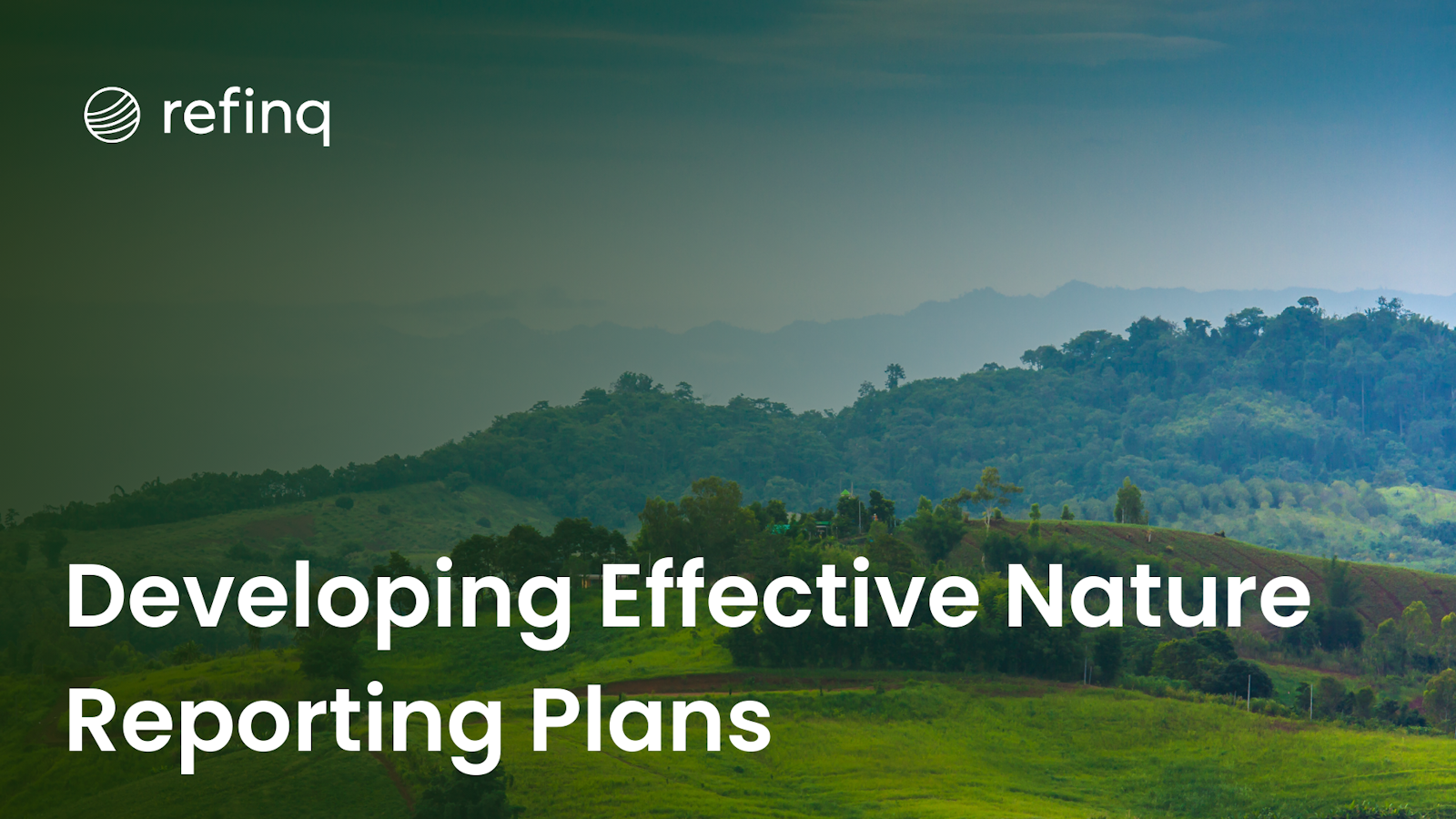

As environmental concerns increasingly influence corporate practices, organizations are focusing on integrating nature reporting into their sustainability strategies. Transitioning to effective nature reporting plans can help businesses identify, manage, and mitigate environmental risks. Resources like CDP's guide to nature transition plans provide insights into aligning these efforts with global sustainability goals.
Platforms like refinq play a pivotal role in this journey. By offering real-time data on biodiversity and climate risks, refinq empowers organizations to create comprehensive and actionable nature reporting plans.
Nature reporting is a critical component of Environmental, Social, and Governance (ESG) reporting. It helps businesses measure their impact on biodiversity and ecosystems while aligning with frameworks like the Corporate Sustainability Reporting Standard (CSRD). Moreover, studies by Chartered Accountants Worldwide indicate that robust nature strategies can enhance corporate reputation and investor trust.
Compliance with Global Frameworks
Nature reporting ensures alignment with international standards such as the Taskforce on Nature-related Financial Disclosures (TNFD).
Risk Mitigation
By identifying environmental risks, businesses can proactively implement solutions that safeguard ecosystems and financial stability.
Stakeholder Expectations
Investors and consumers increasingly demand transparency in environmental practices. Tools like refinq enable organizations to meet these expectations effectively.
Before starting, clearly define the purpose and scope of your nature reporting plan. According to ICAEW, this involves setting measurable targets aligned with sustainability goals and industry standards.
Thoroughly assess your organization’s impact on biodiversity and ecosystems. Platforms like refinq can help businesses conduct detailed analyses using machine learning and geospatial data.
Ensure your nature reporting plan aligns with frameworks such as:
Taskforce on Nature-related Financial Disclosures (TNFD)
Science-Based Targets Network (SBTN)
European Sustainability Reporting Standards (ESRS)
Technology simplifies data collection and analysis. Platforms like refinq offer user-friendly tools to process complex environmental data, providing actionable insights for decision-making.
Outline how you will communicate your findings and progress to stakeholders. Consider tools recommended by Trellis for effective biodiversity reporting.
Technology plays a vital role in enhancing the accuracy and efficiency of nature reporting. Tools like refinq integrate machine learning and geospatial analysis to process over 2.5 billion environmental data points, delivering actionable insights. Businesses can also explore platforms such as:
These tools enable real-time tracking, making it easier for organizations to align their actions with sustainability goals.
Accessing expert guidelines is critical for creating effective nature reporting plans. Resources such as:
These sources provide actionable recommendations for aligning reporting practices with regulatory and market expectations.
refinq is a leader in enabling organizations to develop comprehensive nature reporting plans. By integrating cutting-edge data processing capabilities, refinq helps businesses assess environmental risks with precision.
Advanced Data Integration
refinq processes over 2.5 billion data points, enabling organizations to create detailed biodiversity and climate risk profiles. This data helps businesses prioritize sustainability actions and enhance compliance with global standards.
Customizable Tools for Diverse Sectors
Whether you're a financial institution or a utility company, refinq offers tailored solutions for benchmarking, footprinting, and portfolio impact assessments. These tools support the seamless integration of nature reporting into corporate strategies.
Using platforms like refinq ensures businesses not only meet compliance requirements but also demonstrate leadership in sustainability efforts.
Developing effective nature reporting plans is essential for businesses aiming to align with global sustainability goals. By setting clear objectives, leveraging technology, and aligning with reporting standards, organizations can address environmental risks proactively. Tools like refinq provide the expertise and data-driven insights necessary for success, making it easier for businesses to transition towards sustainable and nature-positive practices.